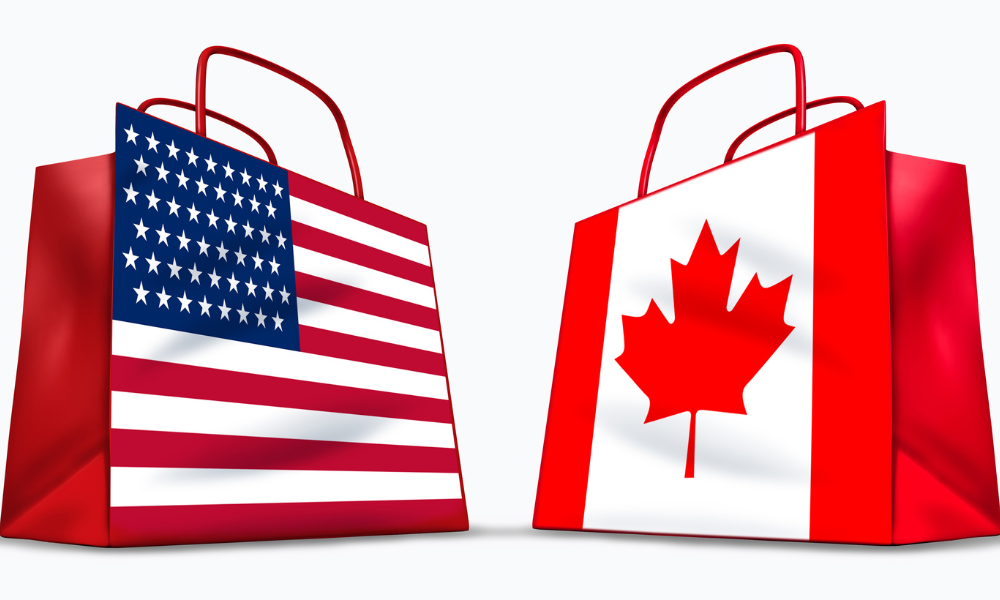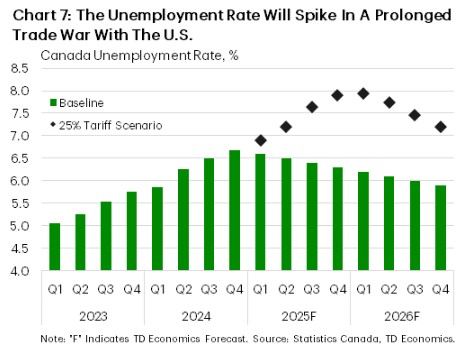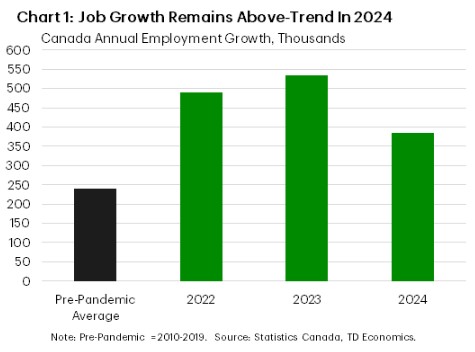
'Much will depend on the depth, breadth and duration of U.S.-Canada trade tensions'

Should U.S. President Donald Trump push through with his threat of imposing a 25% tariff on Canadian imports to his country, the unemployment rate in Canada will surge, according to one expert.
If the United States imposes the tariffs, Canada’s national unemployment rate could jump to about 7.9% by the end of 2025, up from 6.6% in January, according to James Orlando, director of economics at TD Bank.
“A worst-case scenario of steep, across-the-board tariffs on Canadian imports and forceful retaliation by Canada would surely be a bitter blow for the job market,” he says.

One Quebec employer had already said it will lay off 115 people in the province as Canada faces the US tariffs threat, according to a Global News report.
Many of Canada’s key industries—manufacturing, wholesale and retail trade, and transportation—are highly reliant on exports to the U.S. If tariffs are imposed, these sectors could experience reduced demand, lower revenues, and eventual job losses, says Orlando.
And even without immediate layoffs, businesses may respond to trade uncertainty by slowing down hiring, leading to fewer job openings and weaker wage growth.
Meanwhile, if economic conditions remain stable, unemployment is expected to decline gradually, reaching 6.3% by the end of 2025 and 5.9% by 2026, according to the report.
Recently, Treasury Board President Ginette Petitpas Taylor said that the Canadian government is “going to respond appropriately” should the tariffs actually come into place, according to CTV News.
Just this week, Trump said that he plans to impose tariffs of around 25% on auto imports as well as semiconductors and pharmaceuticals shipped to the US as early as April 2, according to a CNN report.
Canada had earlier said it is moving forward with 25% tariffs on $155 billion worth of US goods in response to Trump’s initial tariffs. Shortly after declaring the tariffs in early February, Trump halted its implementation for 30 days.
The threat comes after Canada recorded significant job gains in 2024, according to TD Economics.
In 2024, the country added 384,600 new jobs, surpassing the pre-pandemic annual average of 238,900. This momentum carried into 2025, with an additional 76,000 jobs added in January. Notably, nearly 80% of these positions were full-time, underscoring the labour market’s strength.
Hiring has been broad-based, with roughly two-thirds of industries expanding employment each month throughout 2024. The report highlights that over half of new jobs came from cyclically sensitive industries such as finance, real estate, construction, and professional, scientific, and technical services. These trends indicate resilience despite ongoing economic challenges.
TD Economics also points to a sharp decline in job vacancies throughout 2023 and 2024, following a post-pandemic hiring surge. The number of vacancies now sits near 518,170, close to pre-pandemic levels.
“This shift largely reflects a ‘normalization’ rather than a sign of broad weakness,” Orlando notes.

These gains could be diminished by Trump’s tariffs, he says.
“2025 was supposed to be a year of improved economic growth, as lower rates would bring renewed life to Canadian consumers and businesses…
“The overhang of President Trump’s trade policies and America first attitude risks what otherwise should be a solid year for the Canadian economy. Much will depend on the depth, breadth, and duration of U.S./Canada trade tensions.”
Here are some things Canadian employers should do to effectively manage their workforce amid the tariffs war, according to Hicks Morley’s Partner Henry Dinsdale and Associate Mornelle Lee: